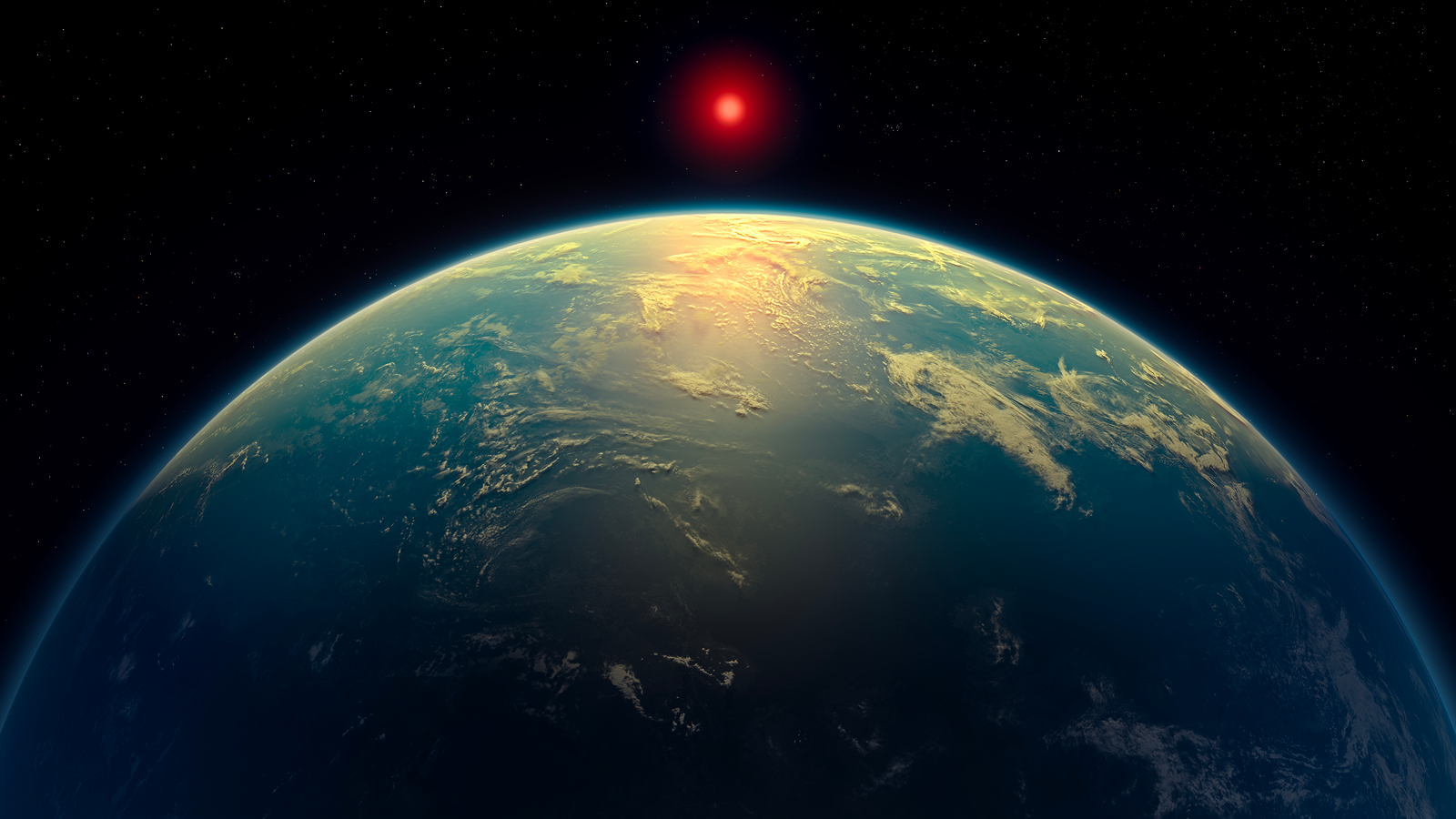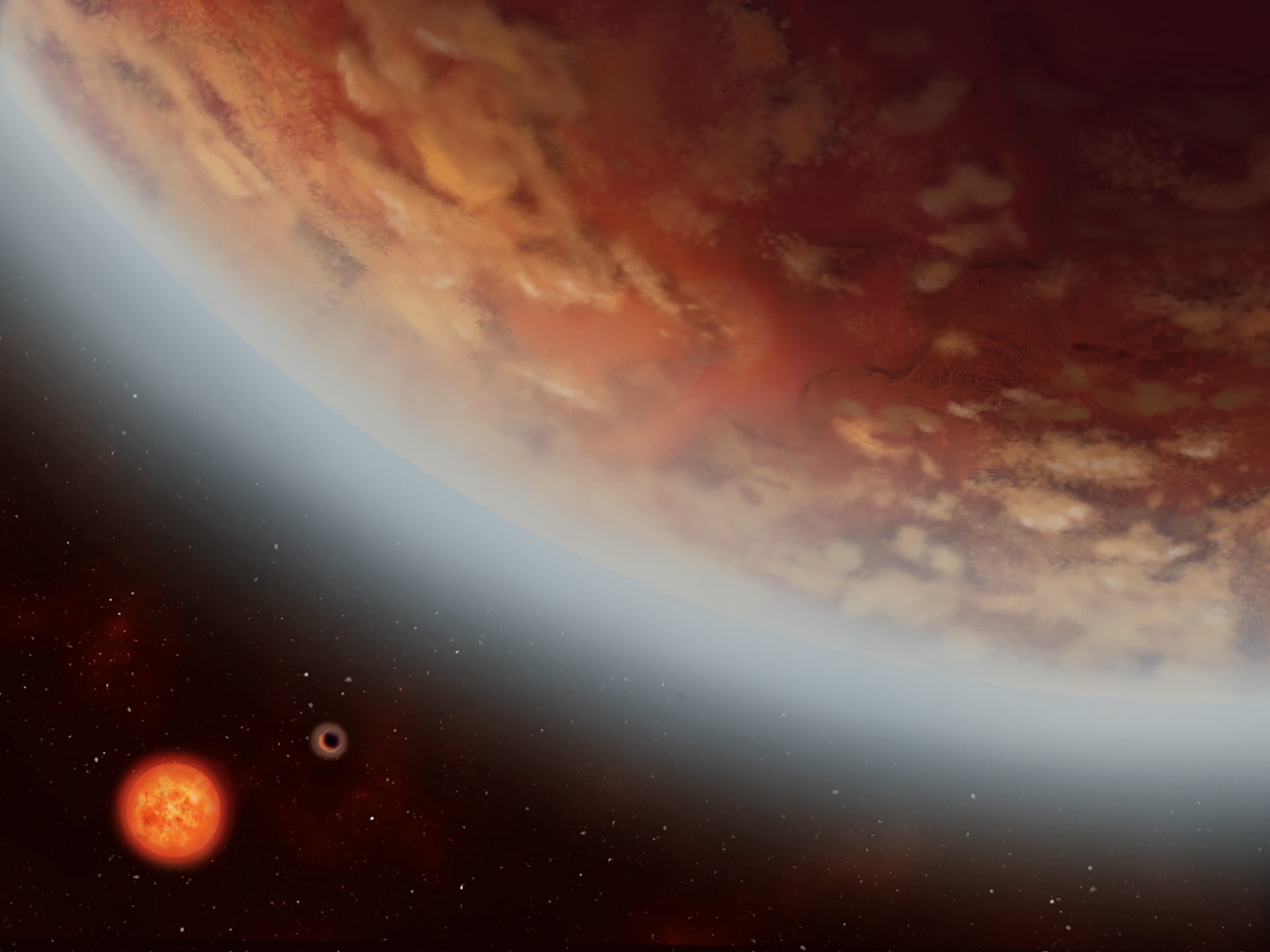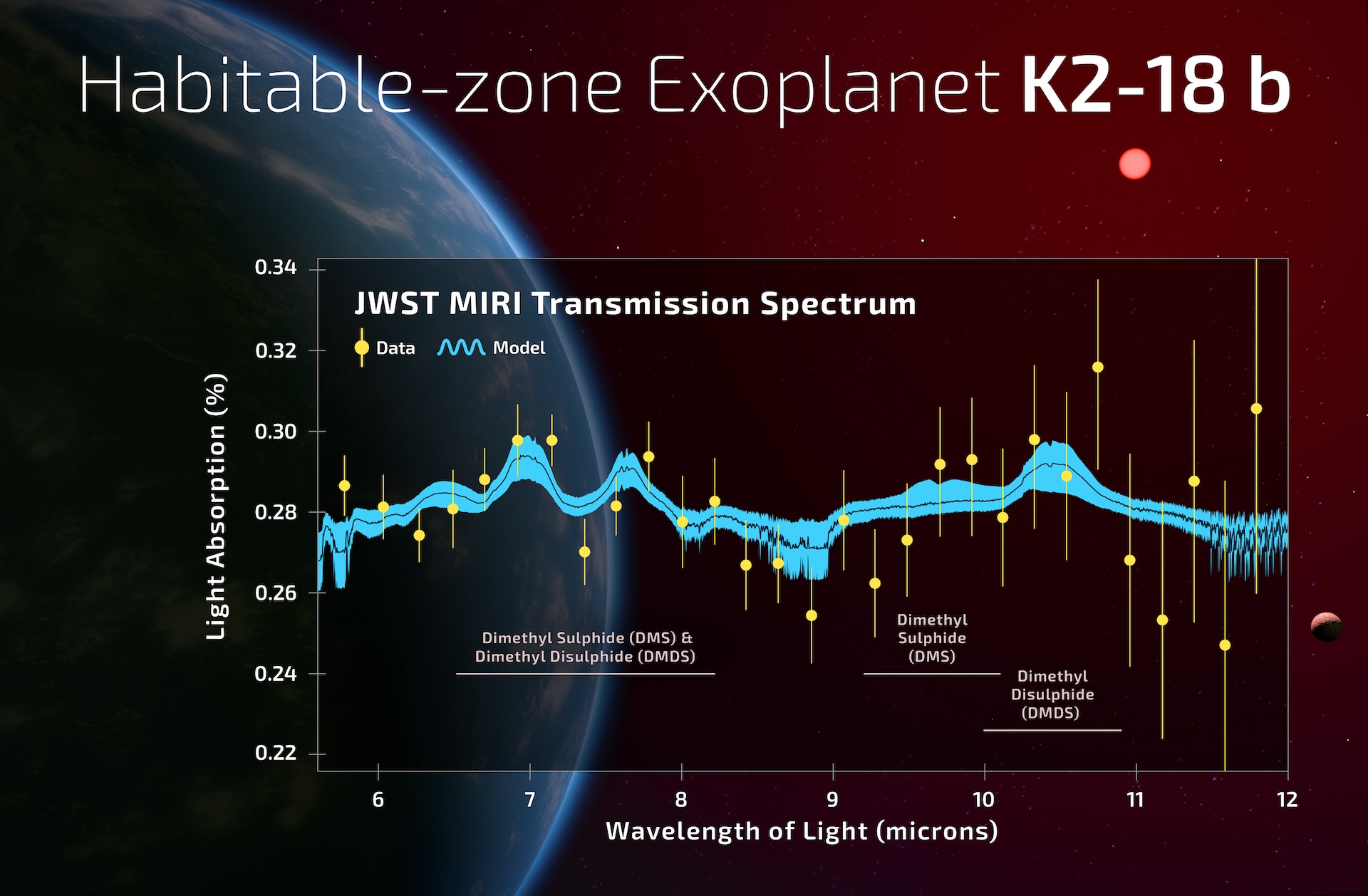Did the James Webb telescope really find evidence of alien life? Here's the truth about exoplanet K2-18b.
A study suggesting the exoplanet K2-18b shows potential signs of alien life has been met with skepticism from the scientific community. Here’s the truth about what the James Webb Space Telescope saw.

The trendiest planet in the universe right now is K2-18b, a potentially habitable world swirling around a small, red star in the constellation Leo. Located 124 light-years from Earth, the mysterious planet will never host human visitors — but a recent glimpse with the James Webb Space Telescope (JWST) hints that alien life may already thrive there in a vast, warm ocean.
In a University of Cambridge-led study published April 17, scientists using JWST reported the detection of possible signs of life in the alien planet's atmosphere, offering what a Cambridge statement called the "most promising" evidence yet of life beyond Earth. However, in the week since the study's publication, a growing number of scientists are already pushing back on this big claim.
"The statistical significance of the detection is marginal," Eddie Schwieterman, an assistant professor of astrobiology at the University of California, Riverside who was not involved in the research, told Live Science in an email. "There are some reasons to be skeptical."
"It's almost certainly not life," Tessa Fisher, an astrobiologist at the University of Arizona who was not involved in the research, told Nature.com.
So what did JWST actually find on K2-18b, and how close are we to solving the ultimate mystery of space? Here's everything you need to know.
What did JWST find on K2-18b?
Unlike optical telescopes such as Hubble, JWST cannot image the surfaces of distant planets directly; instead, its infrared instruments hunt for chemical signs of life — or biosignatures — in planetary atmospheres by mapping how starlight is absorbed or reemitted by molecules in those atmospheres. The resulting graphs of light, called spectra, can reveal the composition of that planet's atmosphere, providing clues about its surface conditions.
Related: 32 alien planets that really exist
Sign up for the Live Science daily newsletter now
Get the world’s most fascinating discoveries delivered straight to your inbox.
In the new Cambridge-led study, scientists using JWST's Mid-Infrared Instrument (MIRI) peered into K2-18b's atmosphere to detect traces of two sulfur-based molecules called dimethyl sulfide (DMS) and dimethyl disulfide (DMDS) — compounds that are known to be produced only by microscopic life-forms like phytoplankton on Earth. If DMS can be produced by some natural mechanism, scientists currently don't know about it, and will have to run extensive tests to uncover it.
The findings add to earlier observations made by the same team using two different JWST instruments in 2023, which also reported possible traces of DMS in the planet's atmosphere.

While the Cambridge team admitted in the statement that they are "deeply sceptical" of their own results, the same release also trumpeted these detections as the "most promising" evidence yet of life beyond Earth, painting a picture of an oceanic planet that could be "teeming with life." (Other studies have argued that K2-18b's ocean may, in fact, be made of magma.)
Nikku Madhusudhan, lead author of both Cambridge studies, stressed that no actual life has been detected on K2-18b yet.
"That's not what we're claiming," Madhusudhan, a professor of astrophysics at Cambridge, told Live Science. "But in the best-case scenario, it's the potential for life."
The team's DMS detection reached the three-sigma level of statistical significance, meaning there is a 0.3% probability that the signals occurred by chance. However, this still falls far short of the required five-sigma level that denotes a statistically significant scientific discovery.
Responding to criticism that the team may have overstated their study's significance, Madhusudhan said it's in the public interest to know how this research is progressing.
"This is the taxpayer paying us, and they have a right to enjoy the process," Madhusudhan added. "If we're sending a robot to Mars, we're not waiting until it goes and finds life to celebrate the act of sending it. We announced that we are sending robots to Mars, and we're excited about the possibility. This is the equivalent of that."
"No strong evidence"
For now, the public has little more than the Cambridge team's study to go on. The complete set of MIRI data on which the team based their discovery will become publicly available April 27, according to NPR, at which point outside researchers can begin to comb through it and formulate peer-reviewed responses.
In the meantime, various researchers have already attempted to re-create the findings using their own data models and have come up short.
In January, a team of scientists independently analyzed K2-18b's atmosphere using the same JWST instruments used in the 2023 study. The team found "no statistically significant or reliable evidence" of DMS on K2-18b, the researchers wrote in a paper published to the preprint server arXiv.
More recently, on April 22, University of Oxford astrophysicist Jake Taylor reanalyzed the JWST spectra shared in the new Cambridge study, using a simple data model that's routinely utilized in exoplanet studies. Taylor's analysis, also published to arXiv, found no traces of DMS, either.

"There is no strong evidence for detected spectral features in K2-18b's MIRI transmission spectrum," Taylor wrote.
Looking only at the Cambridge team's study, Schwieterman also saw cause for hesitation in proclaiming that biosignatures exist on K2-18b.
"When DMS interacts with ultraviolet light from the star, it splits apart into components that reform into other molecules like ethane (C2H6) and ethylene (C2H4)," Schwieterman said. "The paper does not report the detection of these molecules, which is puzzling because you'd expect these gases to appear together."
What comes next?
Everyone, including the Cambridge team, agrees that more observations of K2-18b are necessary to bring clarity to this puzzle. This means researchers will have to request more time with JWST to observe the alien planet as it swoops in front of its star.
Luckily, this is a near-monthly occurrence, with K2-18b completing a transit of its star every 33 days. Budgeting more time to watch these transits should be "trivial" for the telescope, Madhusudhan said.
"One transit is eight hours, roughly," Madhusudhan added. "You only need about 16 to 24 hours of JWST time. To give you a sense of scale, JWST observes thousands of hours every year."
If additional observations can increase the statistical significance of the team's DMS detection, the next step will be to prove that some unknown natural process isn't producing the molecule instead, Schwieterman said. This will take rigorous experimentation and some creative thinking here on Earth. Finally, scientists will need to look at planets that are similar to K2-18b to see if DMS is a common signature around the cosmos.
Extraterrestrials quiz: Are you an alien expert, or has your brain been abducted?

Brandon is the space/physics editor at Live Science. His writing has appeared in The Washington Post, Reader's Digest, CBS.com, the Richard Dawkins Foundation website and other outlets. He holds a bachelor's degree in creative writing from the University of Arizona, with minors in journalism and media arts. He enjoys writing most about space, geoscience and the mysteries of the universe.
You must confirm your public display name before commenting
Please logout and then login again, you will then be prompted to enter your display name.
